Architect G.M. Cantacuzino
Despite his short career, G.M. Cantacuzino left behind some great architectural works.

Christine Leșcu, 16.06.2018, 13:59
The restoration of the
Brancoveanu Palace in Mogosoaia, north of Bucharest and the designs for the
Chrisovelloni Bank Palace in the centre of Bucharest, the Rex Hotel in Mamaia
resort on the Black Sea Coast and the Spa Facility in the resort of
Olanesti,in Valcea County, southern
Romania – are all the work of architect George Matei Cantacuzino. During his
short life, this resourceful architect designed buildings, held classes on
architecture and wrote books, trying to provide a theoretical background to his
style, which is a mix of classical, traditional and modernist architecture.
A descendant of two
Romanian noble families, Cantacuzino and Bibescu, George Matei Cantacuzino was
born in 1899 in Vienna, where his father worked at the Romanian Embassy. Some
of his ancestors were ruling princes and statesmen who contributed to the
social and cultural development of the Romanian Principalities from the Middle
Ages to the modern period. In 1919, George Matei Cantacuzino was admitted to
the Fine Arts School in Paris. That same year, he began restoration work on the
Mogosoaia Palace, the 18th century residence of ruler Constantin
Brancoveanu that became the property of the architect’s aunt, Princess Martha
Bibescu, in the early 20th century. In 1923, George Matei
Cantacuzino and architect August Schmiedigen designed the Chrisovelloni Bank
Palace, inaugurated in 1928. His career took off, but then something happened.
In 1940, a building he had designed, the Carlton apartment block, collapsed
during an earthquake. The authorities blamed both the builders and the
architect. After an inquiry, it was established that the causes that triggered
the collapse of the building had nothing to do with the architect and George
Matei Cantacuzino no longer faced criminal charges.
After World War II and
following the installation of communism in Romania, misfortune struck again.
This period was explored by Vlad Mitric-Ciupe in a book called The Architect
G.M. Cantacuzino in the Securitate Files published by Vremea. We caught with
the author of the book and asked him what happened to Cantacuzino after 1944:
In a moment of
inspiration, in the late 1930s, he sent his wife and two children abroad.
Shortly after the war, he tried to join them. The documents in this book,
arranged in a chronological order, reveal Cantauzino’s attempts to leave the
country and the obstacles raised by the State Security and then by the
communist Securitate, which tried to prevent him from obtaining a passport and
then from getting a visa. This is why he then tried to flee Romania illegally,
because he couldn’t leave it otherwise. There’s an interesting episode, when he tried to flee the country by boat, from
Constanta. At the same time, right from 1945-1946, he was involved in the
attempts to create an anti-communist resistance. The architect’s house was used
for secret meetings between the man who led the armed wing of the national
resistance movement, colonel Ioan Toba, and representatives of foreign legations,
especially British and American officers. He was found out and received a long
and tough sentence, not for trying to cross the border illegally but for
belonging to a banned organisation, and was sent to work on the Canal.
The
Canal in question, which was being built at the time, was meant to link the
Danube to the Black Sea via the southern part of Constanta and is where many
political convicts died from hard labour during the communist regime. Arrested
in 1948, Cantacuzino was released from prison in 1953, his health being
seriously damaged. Vlad Mitric-Ciupe, who wrote a book about the architect
George Matei Cantacuzino, tells us more about the architect’s condition after
he was released from prison:
With
the help of the architect Stefan Bals, to whom he was in fact related,
Cantacuzino managed, quite soon after his release, to find employment with the
Commission of Historical Monuments, but it didn’t take long for him to be given
the sack. He ended up working for the Metropolitan Church in Moldavia, where he
also found accommodation. In the four years he spent there, until his untimely
death in 1960, he was constantly watched by the Securitate. A network of
informers permanently reported everything the architect said or did. He had not
gone through a re-education process in prison, and there are informers’ notes
mentioning Cantacuzino’s reactions to the events in Hungary in 1956. That’s
what made the Securitate tighten their surveillance on him, seeing how he was
openly expressing support for the Hungarian revolution.
George
Matei Cantacuzino died in 1960 in the north-eastern city of Iasi where he spent
his latter years.






























